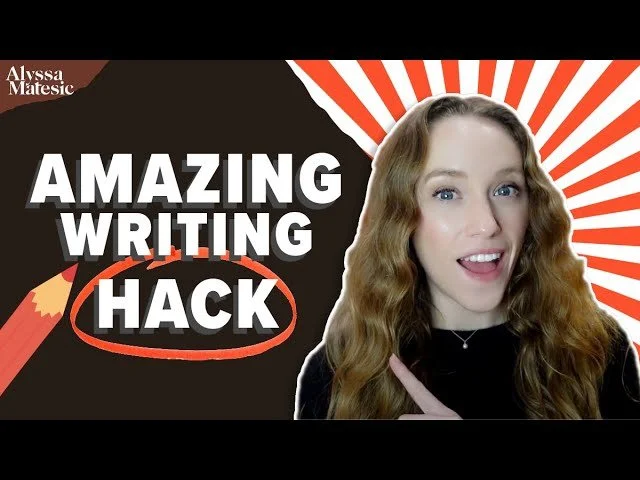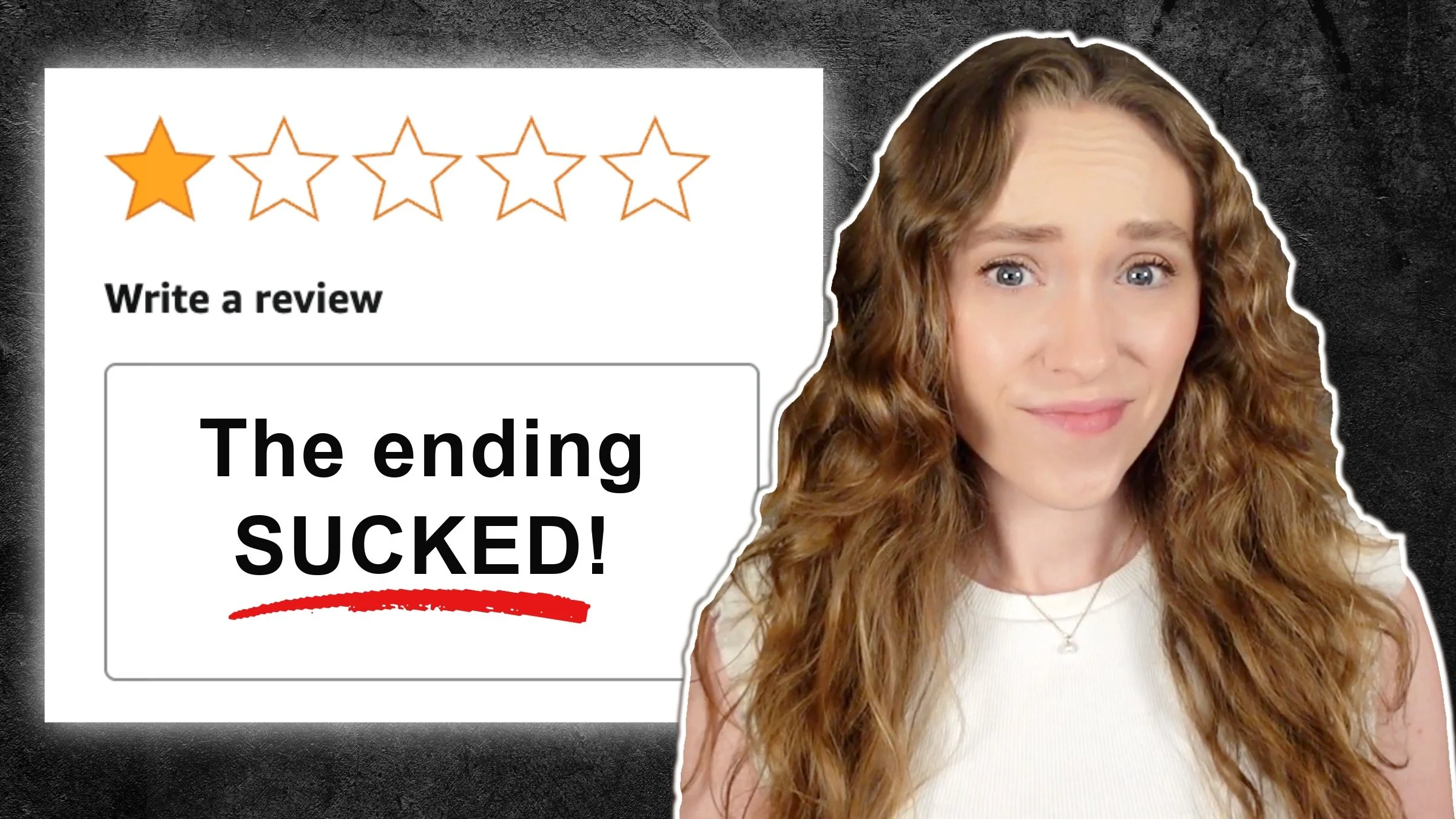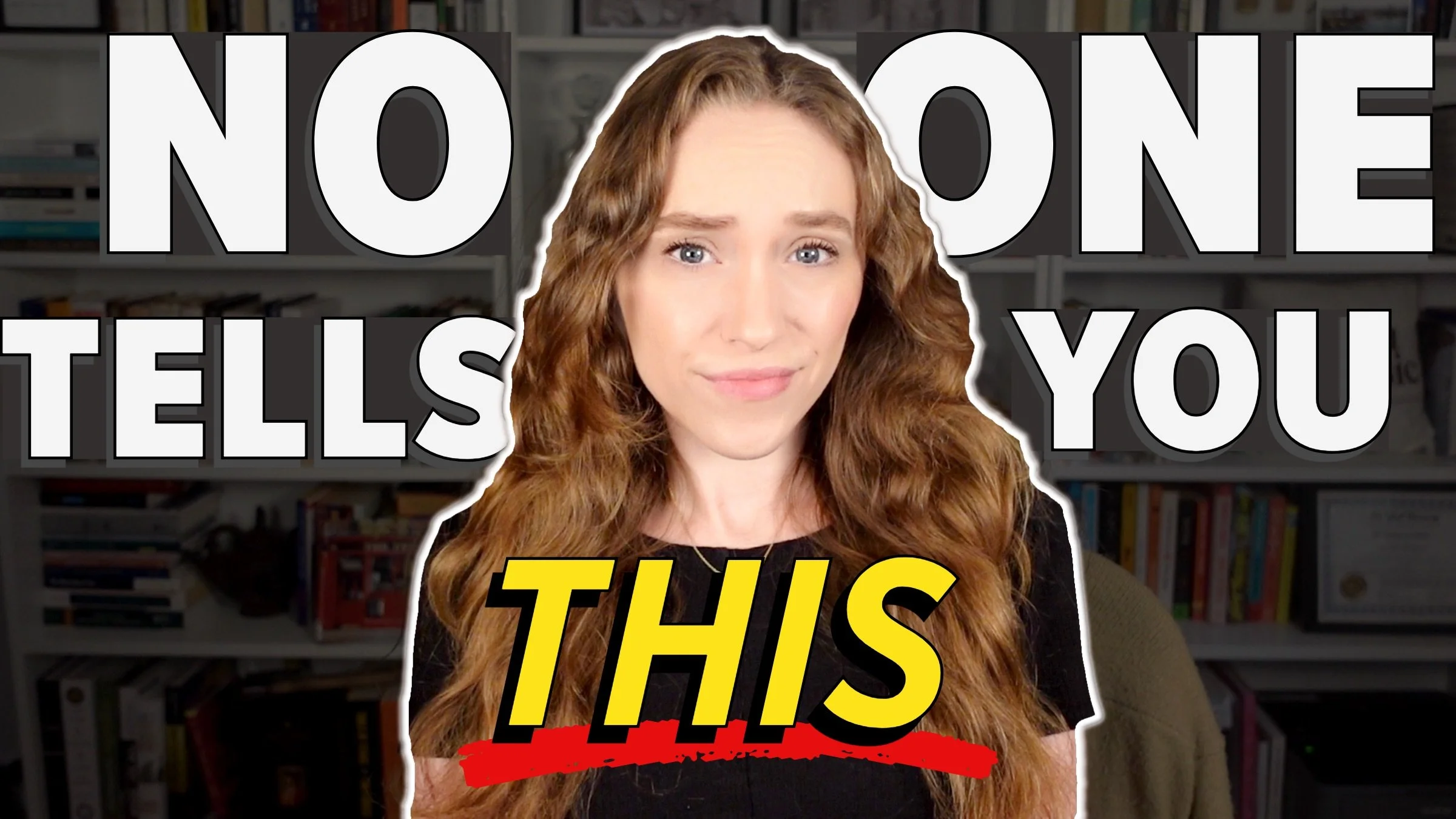Reverse Outlining: The Amazing Hack That Can Fix Everything in Your Novel
HIT PLAY OR READ THE POST BELOW:
Imagine this: you have a draft of your book, but you know that it's riddled with issues. Maybe the pace is too slow in places, or you worry you have too many subplots that are muddying the story. Or you aren't sure that the protagonist's transformation is solid, or you don't know if the themes you want to come through are actually resonating in the narrative.
What if I told you that there is one trick you can use to solve all of these issues in your manuscript and more? It sounds impossible, but it’s true.
This amazing writing hack is called reverse outlining, and it’s going to help you fix every problem in your manuscript.
What Is Reverse Outlining?
Oftentimes, you start with an outline before writing the draft of your book. Plotters will know outlines through and through, as it is part of their writing process. But a reverse outline is something that you write after the book draft is complete.
It's basically a very detailed summary of your manuscript as it currently stands. A reverse outline is typically organized chapter by chapter or scene by scene, where you document what happens in each and every major scene in your story, and it should reflect the same structure and chronology of your book itself.
I've seen authors create this reverse outline just in a Word document as a bulleted list. For example, you’d write “Chapter One,” and then have bullet points for every scene that occurs in chapter one, and then move on to chapter two, etc. I've also seen authors put together really impressive reverse outlines in Excel where they create a chart or a table of sorts to organize all of their scenes. However you choose to create your reverse outline, you're going to go back through your draft and essentially write a summary of it.
Now, realize that a reverse outline is different from a synopsis document, which you might be familiar with if you are querying literary agents. A synopsis is not getting into scene-level detail, but your reverse outline is going to mention each and every scene in your book.
Because you have to read back through your draft to create this reverse outline, it is going to take some time upfront. But I promise that it's going to save you so much time on the back end when you go back into your manuscript to revise it, because you essentially have a cheat sheet already for so many of the issues that you want to tackle.
The beauty of the reverse outline is that it works amazingly for both plotters and pantsers. If you're a plotter, you might say that you don’t need a reverse outline because you already created an outline before you started drafting. But remember that the book that you wrote is likely different from the book that you outlined. There are probably at least a few scenes that are not exactly where you outlined them to be or scenes that didn't pan out the way that you outlined for them to. Things change as you go into the draft. In the reverse outline, you are going to be shown what story you actually produced compared to the one that you originally outlined.
For pantsers, the reverse outline is likely going to be the first time you're seeing your story presented in this bare-bones way.
How Reverse Outlining Can Improve Your Novel
There are so many ways to leverage the power of reverse outlining to fix common mistakes in your story. Here are just a few powerful ways it can help you revise:
1. Balancing POVs and Storylines
If you have a multi-POV or multi-storyline narrative, it's important that you are giving each POV and storyline adequate space in the story to be fully developed. You don't want to overly favor one POV or storyline or neglect one POV or storyline. The narrative should ideally feel balanced.
In your reverse outline, you could color code different scenes that belong to different storylines or POVs. This is going to make it so easy for you to take a look at your reverse outline and see the periods in your story where you are potentially neglecting a POV or storyline or a period where you are sitting with one POV or storyline for a very long time and not getting any of those other POVs or storylines mixed in. These types of issues are going to be super obvious to you in the reverse outline.
2. Improving Pace
The reverse outline is also going to help you improve the pace of your narrative. One common issue many authors have, especially on early drafts of their manuscript, is that certain sections are slow or boring — but it can be very difficult to pinpoint what these sections are where readers are possibly disengaging.
When you are reverse outlining, pay very close attention to the scenes or chapters that you struggle to summarize and describe in the reverse outline. That's telling you that maybe there actually isn't a very significant development or event in that scene or chapter, and therefore, maybe nothing is really happening, and you could cut it entirely.
The reverse outline is also going to make it so easy for you to see how much space there is in the story between major plot events. For example, maybe you think that two events happen in very quick succession, and the plot moves along swiftly. But when you get to the reverse outline, you see there's actually a ton of stuff between the two events, and you can now move events around so that the plot develops at a faster pace.
Reverse outlining is going to help you reorganize scenes to create the most effective narrative. If you worry about having a saggy middle, for instance, the reverse outline is going to help you see what is actually happening in the middle section of your narrative and if you could potentially reorganize things to be more swiftly paced.
3. Identifying Outlier Scenes
Outlier scenes are scenes or subplots that stand on their own and are somewhat tangential to the main plot and main storyline. Ultimately, they might not actually be serving or fitting into the main narrative. In looking at your reverse outline, are there certain scenes that really have no ramifications on the rest of the story? Is there one scene where you're following a character or a POV that is never again followed anywhere else in the story? Those are signs that maybe that scene is tangential and isn't actually contributing to the story.
I know how hard it can be to kill your darlings, but sometimes omitting scenes is essential for you to create a cohesive and engaging narrative.
4. Tracking Character Development
Once you have that reverse outline created, you can see how your characters evolve and transform over the course of the story. How does the character act differently as the events of the story progress?
As you're looking at your outline, ask yourself: do my characters go through a robust transformative arc, or are they staying static from beginning to end and really not changing in any way? Creating a strong transformative arc is especially important for your protagonist or protagonists. Is it clear to you where and how they are evolving over the course of the story? Which scenes are those pivot points that shift their character in one way or another?
In your reverse outline, consider highlighting or color coding those major events for your protagonists where things meaningfully change for them. That's going to help you see how exactly you are manifesting your character's transformation.
5. Incorporating Themes and Motifs
If you have a certain theme that you are trying to express in your narrative, it's essential that it comes through to the reader and that they're able to come away from the novel with that takeaway that you want to instill in them. Your reverse outline is going to help you see which scenes are contributing and exemplifying that theme and check if you are threading through the theme throughout the entire narrative in meaningful ways.
For example, if one of the themes you want to reflect in your story is that family members put one another first, then color code or highlight all of the scenes in your reverse outline that actually reflect that theme (in this case, that show a character putting their family first). You might discover that the theme you thought was crystal clear is actually not as prominent as you intended for it to be, and then you can fix that on the next draft.
I hope this helped you realize the power of reverse outlining to help you look at your story from a completely different lens and figure out how to improve some of the common issues in it. Thank you so much for reading, and happy writing!






